
Chapter 1 Industry Overview
1.1 Introduction
The instrumentation industry refers to the industry that specializes in the research, design, manufacture, sale and service of various instruments, meters and automation equipment required for scientific research, production and life. These instruments and meters can be used to measure, indicate, record, adjust and control various parameters in physical, chemical and biological processes. This industry covers a wide range of equipment and systems, from simple thermometers and pressure gauges to complex fully automated control systems.
Instruments can be classified from multiple dimensions, such as working principle, purpose, accuracy, etc. According to the working principle, they can be divided into mechanical, electronic, optical, electromagnetic, etc.; according to the purpose, they can be divided into detection instruments, measuring instruments, control instruments, etc.; according to accuracy, they can be divided into general accuracy, medium accuracy and high accuracy, etc.
In the automation and instrumentation market, instrumentation can be further segmented into fully automatic and semi-automatic. Fully automatic instrumentation can complete the specified task autonomously without human intervention. Semi-automatic instrumentation, on the other hand, requires some manual intervention to complete the task. These two types of instrumentation are widely used in various industrial fields such as oil and gas, water treatment and wastewater treatment, chemical processes, etc.
1.2 Development History
The development of China's instrumentation industry began in Shanghai and has gone through many key changes and development stages. As early as 1949, the Central Industrial Laboratory established by the Ministry of Economic Affairs of the Republic of China in Shanghai had already begun to engage in the imitation and production of electrical instruments, pressure and flow detection, signal generators, material testing instruments and other instrumentation equipment. After the liberation of Shanghai in 1949, the laboratory was taken over and renamed the Shanghai Industrial Laboratory of the Central Light Industry Ministry in 1952. In 1956, the Shanghai Instrumentation Science Research Institute was established on the basis of the laboratory. This was the first national-level research institute in China's instrumentation industry, and later developed into the Shanghai Industrial Automation Instrumentation Research Institute.
After decades of construction and development, China's automation instrument industry has formed a research and development system with a certain scale and level, has a high-level scientific and technological team, has achieved a series of scientific research results, and developed a large number of new products. The main scientific research units include Shanghai Industrial Automation Instrument Research Institute, Chongqing Industrial Automation Instrument Research Institute, Xi'an Automation Instrument Research Institute, Tianjin Automation Instrument Research Institute and Beijing Automation Technology Research Institute. At the same time, each automation instrument enterprise also has its own research institute or laboratory. These research institutes play a leading role in the scientific and technological progress of the industry, especially in organizing the preparation of industry development plans, formulating technical standards and quality inspections, and providing guidance for the development of industry technology.
Since the 1970s, China's automation instrument products have gradually moved closer to international standards. In the late 1980s, the industry began to promote the ISO 9000 series of international standards for enterprise management, carry out industry reliability and environmental testing research, conduct reliability testing research on various types of automation instrument products, and carry out product quality supervision and evaluation work within the industry to ensure that products meet relevant international and national standards. Through unified design and joint design, the combination of factories and institutes is strengthened, and scientific research results are quickly transferred to industrialization, promoting technological progress in the industry.
In 1978, the Industry Research Institute proposed the overall strategic proposal for the development of China's automation instruments at the instrumentation industry planning meeting, emphasizing that products should develop in the direction of digital detection and transmission, intelligent regulation and control, and miniaturization of actuators. In terms of application, it is necessary to strengthen system design, develop complete sets of services, expand the application field, and develop towards systematization. In terms of management, it is necessary to strengthen macro-management, promote enterprise alliances, and support the backbone role of key enterprises. In the process of new technology development, new product development and talent training, the automation instrument industry maintains close cooperation with the Academy of Sciences, colleges and universities, and user units to jointly promote the progress of the industry.
The state has successively supported and established many key instrumentation enterprises, including Shanghai Heping Thermal Instrument Factory, Shanghai Dahua Instrument Factory, Shanghai Electric Meter Factory, Shanghai Regulator Factory, Beijing Automation Instrument Factory, Xi'an Instrument Factory, Guangdong Instrument Factory, Kaifeng Instrument Factory, etc. The development of these enterprises has laid the foundation for the automation instrumentation industry, and gradually formed six major production bases in Shanghai, Chongqing, Xi'an, Tianjin, Beijing, and Dalian, which have occupied a leading position in the industry in terms of output value, number of enterprises, number of employees, and technical level.
After years of reform and joint reorganization, the automation instrument industry has established three major groups based on the six major bases, namely Shanghai Automation Instrument Co., Ltd., Silian Automation Instrument Group Co., Ltd. and Western Union Automation Instrument Group Co., Ltd. These three groups all have strong system design and complete service capabilities, and have established cooperative relations with many internationally renowned companies to jointly explore domestic and foreign markets.
Since the reform and opening up, the automation instrument industry has established friendly cooperative relations with international companies through various forms such as license trade, introduction of process equipment and testing equipment, joint ventures and joint development, which has promoted the industry's technological progress and market development. In the future, the automation instrument industry will continue to develop in the direction of intelligence, digitization and efficiency, realizing the transformation from analog technology to analog-digital hybrid technology, from manual design to computer-aided design, from traditional processes to automatic and efficient special processes, and from traditional management models to modern management.
1.3 Industry Status
China's instrumentation industry is an important part of the country's economic development and technological progress. In recent years, with the development of science and technology and industrial upgrading, this industry has made remarkable progress. At present, China's instrumentation industry is mainly concentrated in electronic measuring instruments, industrial automation instruments, medical instruments, environmental monitoring instruments and other fields, forming a relatively complete industrial chain and multi-level market structure.
China's electronic measuring instruments occupy an important position in the global market. With the rapid development of information technology and the electronics industry, the demand for electronic measuring instruments continues to grow. These instruments play an important role in R&D, production and quality control. Domestic enterprises continue to improve their technology in this field and gradually achieve import substitution. Some enterprises even enter the international market and their competitiveness continues to increase.
Industrial automation instruments are another important part of China's instrumentation industry. With the advancement of Industry 4.0 and intelligent manufacturing, the application scope of industrial automation instruments continues to expand, and market demand has grown steadily. These instruments realize data collection, monitoring and control in the production process, improving production efficiency and product quality. Domestic companies continue to carry out technological innovation and product upgrades in this field, and their market share continues to increase.
Medical equipment is one of the fastest growing fields in recent years. With the aging of the population and the improvement of people's health awareness, the market demand for medical equipment continues to expand. China's medical device companies have made remarkable progress in technology research and development and market expansion, and some companies have already become internationally competitive. Especially driven by the COVID-19 pandemic, the medical instrument industry has ushered in new development opportunities, and domestic companies have made breakthrough progress in products such as ventilators, monitors, and thermometers.
Against the backdrop of enhanced environmental policies and public environmental awareness, the market demand for environmental monitoring instruments has grown significantly. China's environmental monitoring instrument companies are constantly improving their technology and developing a variety of instruments and equipment suitable for environmental monitoring such as air, water quality, and soil. These devices play an important role in pollution source monitoring, environmental quality assessment, etc., and have promoted the development of environmental protection work.
Although China's instrumentation industry has made remarkable progress, it still faces some challenges. First, core technologies and high-end products still rely on imports, and domestic companies need to improve their technological innovation and R&D capabilities. Secondly, the industry standards and certification system are not perfect, which affects the international competitiveness of products. Finally, the market competition is fierce, and companies need to continuously improve in brand building, market development, and after-sales service.
China's instrumentation industry has achieved considerable development under the support of national policies and driven by market demand. In the future, with the acceleration of scientific and technological progress and industrial upgrading, the industry is expected to usher in broader development prospects. Enterprises need to continuously improve their technological level, strengthen independent innovation, actively explore international markets, and improve product quality and service levels in order to maintain their competitive advantage in the fierce market competition.
Chapter 2 Industrial Chain, Business Model and Policy Supervision
2.1 Industrial Chain
The industrial chain of the instrumentation industry mainly includes the following links:
Raw material supply: This is the starting point of the industry chain. Depending on the instrumentation product, the raw materials may include various metals, plastics, electronic components, etc.
When analyzing the industrial chain of the instrumentation industry, we need to pay attention to the following points:
Impact of technological development on the industrial chain: The emergence of new technologies may change the structure of the industrial chain. For example, the development of IoT (Internet of Things) and AI (Artificial Intelligence) may make instruments more intelligent, which may increase the importance of system integration.
Supply chain risks: Today, the global supply chain faces various risks, including trade wars, epidemics, etc. This may affect the supply of raw materials and component manufacturing.
Changes in market demand: Changes in market demand will affect all links in the industry chain. For example, as environmental awareness increases, there may be an increase in demand for environmentally friendly instruments and meters, which will affect product design and manufacturing.
In China, the instrumentation industry, as a basic and strategic industry of the national economy, has always been an industry that my country has focused on in terms of capital, technology, and talent. From the perspective of the industrial chain, the upstream enterprises of the instrumentation industry mainly include suppliers of electronic components such as sensors and chips, and suppliers of raw materials such as hardware and packaging boxes. The downstream of the industry is composed of multiple industries such as petrochemicals, steel smelting, electric power, electronic manufacturing, environmental monitoring, and medical health.
Figure: Overview of the industry chain
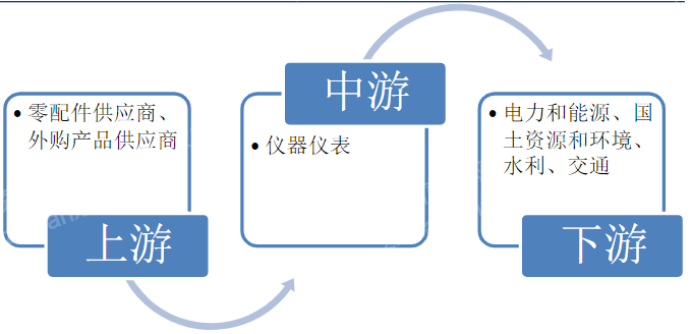
Source: Asset Information Network, Qianji Investment Bank, Essence Securities
Upstream
Sensors, chips, PCBs and other electronic components as well as various hardware, wires, packaging and other materials are the main raw materials for instrumentation products. The output, quality and price of raw materials directly affect the development of the instrumentation industry.
Figure: Sales volume of electronic components
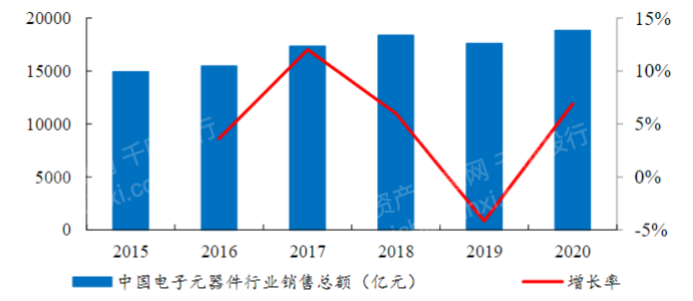
Source: Asset Information Network, Qianji Investment Bank, Kaiyuan Securities
At present, the upstream related enterprises in my country's instrumentation industry mainly include Hengdian Group DMEGC Co., Ltd., Guangdong Shengyi Technology Co., Ltd., Guangdong Fenghua High-Tech Co., Ltd. and AVIC Optronics Technology Co., Ltd.
Midstream
Figure: Operating income and growth rate of my country's instrument manufacturing industry
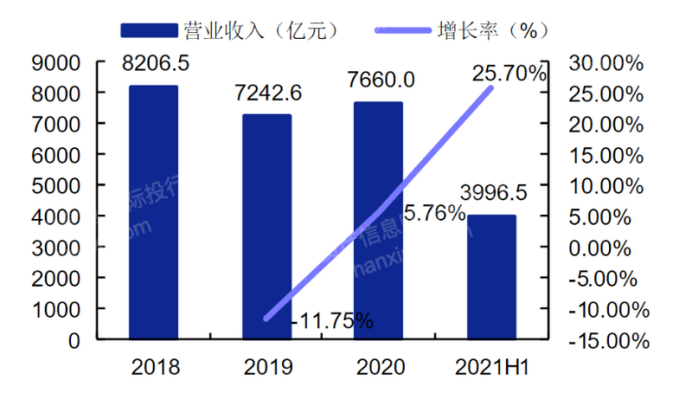
Source: Asset Information Network, Qianji Investment Bank, Essence Securities
At present, the main companies related to my country's instrumentation industry include Shenzhen Huashengchang Technology Industry Co., Ltd., Fluke Testing Instruments (Shanghai) Co., Ltd. and Zhengzhou Sanhui Electric Co., Ltd.
Downstream
The downstream demand for instruments and meters is extremely broad, covering all aspects of industry, transportation, construction surveying and mapping, science and technology, environmental protection, national defense and daily life. The demand of the downstream market provides a broad space for development for this industry.
From the perspective of the surveying and mapping and geographic information industry, the expansion of application scope and the increasing market demand have promoted the total value of surveying and mapping services in my country's surveying and mapping and geographic information industry to increase year by year.
Figure: Market size of geographic information and mapping

Source: Asset Information Network, Qianji Investment Bank, Wanlian Securities
At present, the downstream related enterprises in my country's instrumentation industry mainly include Shanghai Construction Group Co., Ltd., Beijing Weize Surveying and Mapping Co., Ltd. and China Testing & Certification Group Co., Ltd.
2.2 Business Model
Products reach the final consumers through distribution channels. Smooth sales channels can ensure that products enter the market smoothly. Otherwise, channel barriers will affect the market operation of enterprises. Research on many enterprises and industry channels shows that the "sales channel bottleneck" problem is a common problem that restricts the development of enterprises. Therefore, in the investigation before the launch of new products, it is necessary to conduct sufficient research on the channel type, channel member composition, channel characteristics and other aspects of this type of product. The results of the investigation and research have important guiding significance for establishing one's own channel selection and management.
Figure Business Model of Instrument Industry
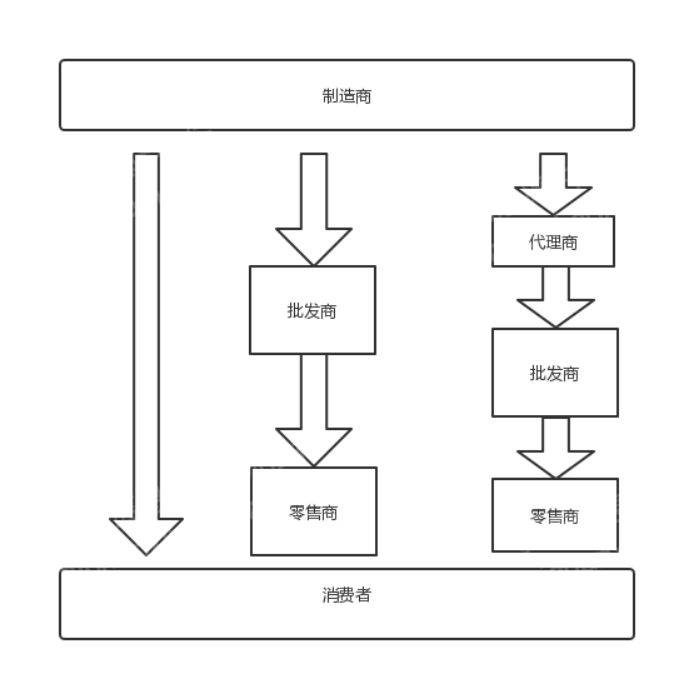
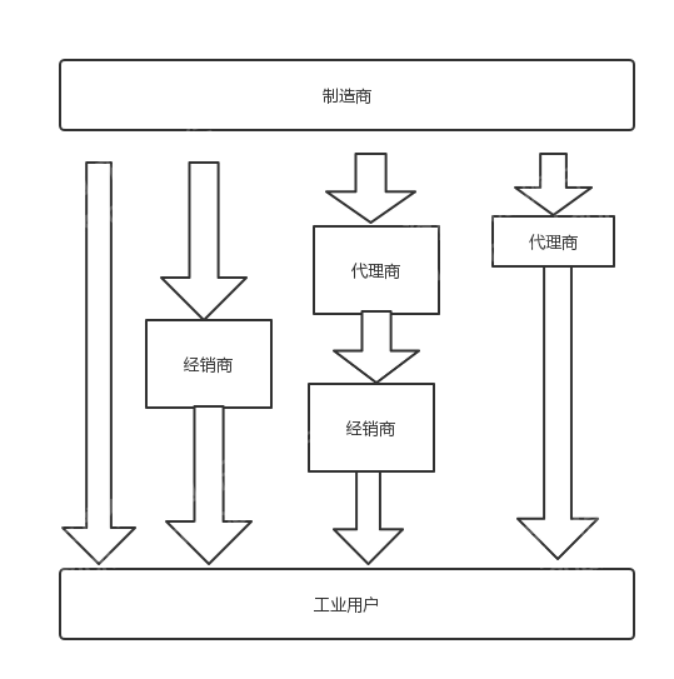
Source: Asset Information Network Qianji Investment Bank
2.3 Technological Development
The technology of the instrumentation industry is developing rapidly, driven by multiple fields and trends. The main technology development trends of the industry in the future are as follows:
(1) Internet of Things (IoT) and Industrial Internet
These two technologies are changing the instrumentation industry. The Internet of Things enables devices to collect, send and analyze data in real time, helping to achieve remote monitoring and predictive maintenance. The Industrial Internet improves production efficiency, reduces costs and strengthens business innovation by connecting devices and systems.
(2) Artificial Intelligence and Machine Learning
The application of these technologies in the instrumentation industry is gradually increasing, for example in quality control, equipment maintenance, and fault prediction. By using artificial intelligence, machines can self-learn and adapt to environmental changes, making equipment more intelligent and automated.
(3) Big Data Analysis
As the amount of data generated by instrumentation equipment increases, the importance of big data analysis is also increasing. By analyzing this data, companies can better understand the operation of equipment, predict equipment maintenance needs, optimize equipment usage efficiency, and provide better customer service.
(4) Additive manufacturing and 3D printing
These technologies allow for faster and more flexible manufacturing of complex components and equipment, especially when a specific design is required at short notice. This is very useful for manufacturing customized instrumentation equipment, as well as providing rapid equipment maintenance and parts replacement services.
(5) Green and sustainable technologies
As the world pays more attention to environmental protection and sustainable development, the instrumentation industry is also developing and adopting more green and sustainable technologies. For example, developing and using equipment with higher energy efficiency and less emissions, and reducing the environmental impact of equipment by increasing its life and recyclability.
(6) Optoelectronics and microelectronics technology
Both technologies are widely used in various high-precision and high-sensitivity instruments. As these technologies develop, we expect that more high-performance and high-efficiency instruments will be developed.
All of the above technologies are likely to promote the development of the instrumentation industry and help the industry meet the ever-changing and improved needs. At the same time, the development of these technologies will also promote innovation and transformation of the industry, providing companies with new business opportunities and challenges.
By counting the number of patents of each patent applicant in the domestic instrumentation industry, the top companies are: Sichuan Instrument Co., Ltd., Jingce Electronics, Sande Technology, Qinchuan IoT, Juguan Technology, Jinka Intelligent, Tianrui Instruments, and Ulead, etc.
Figure TOP 10 listed companies in the instrumentation industry with the largest number of patents
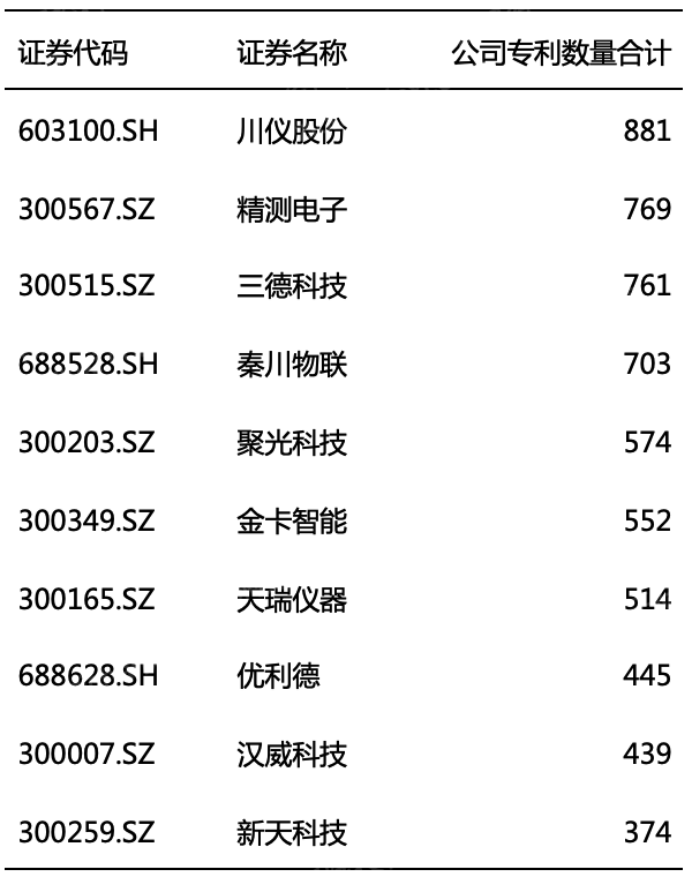
Source: Asset Information Network Qianji Investment Bank iFinD
2.4 Policy supervision
Administrative supervision department
Ministry of Industry and Information Technology: It is the competent department of the instrumentation industry, mainly responsible for industrial policy research and formulation, standard research and drafting, industry management and planning, etc.
General Administration of Quality Supervision, Inspection and Quarantine: Mainly responsible for supervising and managing the production and sales of measuring instruments nationwide, formulating national metrological technical specifications and verification procedures, and conducting metrological traceability, metrological supervision and other aspects of various instrument companies involved in metrological performance.
Self-regulatory association
The main functions of the China Instrument Industry Association are: to participate in the formulation of industry plans with the authorization or entrustment of government departments, and to conduct preliminary demonstration of major technological transformation, technology introduction, investment and development projects in the industry; to conduct investigations and research on industry and regional economic development, and put forward opinions and suggestions on economic policies and legislation; to collect, organize and analyze the production and operation conditions of member units and technical and economic information and market information of the industry at home and abroad, and provide information services to member units; to participate in quality management and supervision work, participate in the formulation and revision of national standards and industry standards, organize their implementation and conduct supervision under the entrustment of government departments; to host exhibitions and trade fairs under the entrustment of the government or according to the needs of market and industry development; to carry out economic and technological exchanges and cooperation at home and abroad; to establish publications, create websites, conduct consultations, and help enterprises improve their operations and management in accordance with relevant regulations.
Industry Policy
In September 2022, the People's Bank of China announced the establishment of a special re-loan for equipment renewal and transformation, with a quota of more than 200 billion yuan, to support financial institutions in providing loans for equipment renewal and transformation in 10 fields at an interest rate not higher than 3.2%. Together with the central government's 2.5% interest subsidy, the actual loan cost of the loan subject for equipment renewal and transformation in the fourth quarter of this year will not exceed 0.7%. The deadline is December 31, 2022.
In September 2022, the "Notice on Matters Related to Expanding Investment in the Education Sector" was issued, clarifying that the key support scope of special loans includes: updating and upgrading of teaching and research conditions and equipment in colleges and universities, digital construction of schools, and domestic substitution of data centers. All schools should submit the construction content to the Ministry of Education on September 18.
In September 2022, the State Council Executive Meeting decided to support the purchase and renovation of equipment in universities, research institutes, hospitals, small and medium-sized enterprises through policy interest subsidies and special re-loans, with an overall scale of 1.7 trillion yuan and a deadline of December 31, 2022.
In February 2022, the Ministry of Science and Technology issued a notice soliciting opinions on the 2022 project application guidelines for the key special project "Basic Scientific Research Conditions and Major Scientific Instruments and Equipment R&D" of the National Key R&D Program. Multi-channel mixed-signal oscilloscopes and wide-band sampling oscilloscopes were included in the key special projects.
2021.12, Order No. 103 of the President of the People's Republic of China, Government procurement shall purchase scientific and technological innovation products and services of natural persons, legal persons and unincorporated organizations within the country, provided that their functions, quality and other indicators can meet the government procurement needs; if they are put on the market for the first time, government procurement shall be the first to purchase them, and shall not be restricted based on commercial performance.
2021.07, 5G Application "Sailing" Action Plan (2021-2023), accelerate the filling of industry weaknesses. Support the research and development of 5G radio frequency, protocol, performance and other instruments with high precision, high sensitivity and large dynamic range, and drive the breakthrough of high-end chips and core components for instruments as soon as possible.
2021.07, Guiding Opinions on Accelerating the Cultivation and Development of High-quality Manufacturing Enterprises, Intensify the research and demonstration of key core technologies, products, and equipment in the fields of basic parts, basic electronic components, basic software, basic materials, basic processes, high-end instruments and equipment, integrated circuits, and network security. Promote the opening of major national scientific research infrastructure and large-scale scientific research instruments to high-quality enterprises, and build production and application demonstration platforms and industrial technology foundation public service platforms.
2021.03, The 14th Five-Year Plan for National Economic and Social Development of the People's Republic of China and the Long-Term Goals for 2035, Relying on leading enterprises in the industry, we will increase our efforts to tackle key products and key core technologies, accelerate breakthroughs in engineering and industrialization; and strengthen the research, development and manufacturing of high-end scientific research instruments and equipment.
2020.9, Guiding Opinions on Expanding Investment in Strategic Emerging Industries to Cultivate and Strengthen New Growth Points and New Growth Poles, accelerating the high-end equipment manufacturing industry to make up for shortcomings, and focusing on supporting the production of high-end equipment such as industrial robots, construction, medical and other special robots, high-end instruments and meters, rail transit equipment, etc.
2020.03, Strengthen the "from 0 to 1" basic research work plan, strengthen the design and development of major scientific and technological infrastructure and high-end general scientific instruments, focus on the research and development, engineering and industrialization of high-end general and professional major scientific instruments and equipment, and promote the rapid development of the high-end scientific instrument industry.
In March 2020, the Ministry of Industry and Information Technology issued a notice on promoting the accelerated development of 5G, continuing to support the research and development, engineering research and industrialization of key areas such as 5G core chips, key components, basic software, and instrumentation, laying the foundation for industrial development.
Chapter 3 Financial, Risk and Competition Analysis
3.1 Financial Analysis and Valuation Methods
We usually use the following main methods to analyze the instrumentation industry:
(1) Financial statement analysis
This includes an in-depth analysis of the company's balance sheet, income statement and cash flow statement to understand the company's financial status. For example, the income statement can reflect the company's profitability and operating efficiency, the balance sheet can reflect the company's asset structure and liabilities, and the cash flow statement can reflect the company's cash inflows and outflows.
(2) Ratio analysis
This includes evaluating the company's financial health and operating efficiency using various financial ratios such as profitability ratio, asset turnover ratio, current ratio, etc. These ratios can help us understand key factors such as the company's profitability, debt-paying ability, operating efficiency, etc.
(3) Cash flow analysis
Cash flow is a key factor in assessing the health of a company because it shows its ability to repay debts and its long-term viability. This includes operating cash flow (cash inflows from day-to-day operations), investing cash flow (cash inflows and outflows related to the company's investment activities) and financing cash flow (cash inflows and outflows related to the company's capital structure and debt financing).
(4) Earnings quality analysis
By analyzing the sources of profit, we can understand the quality of a company's profit. For example, continuous operating income can better reflect a company's actual operating capacity than one-time income (such as the sale of assets).
Figure Instrument Index 881119.TI Financial Data
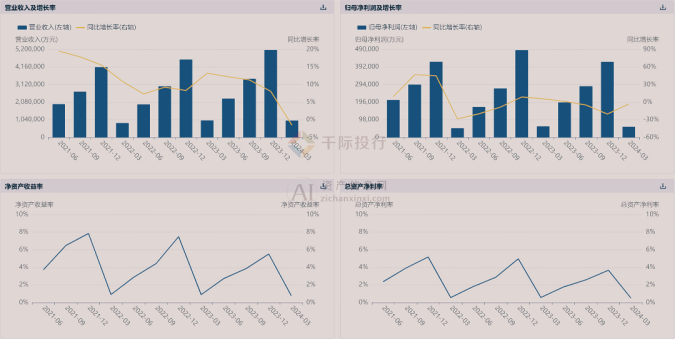
Source: Asset Information Network Qianji Investment Bank iFinD
Figure Instrument Index 881119.TI Market Performance
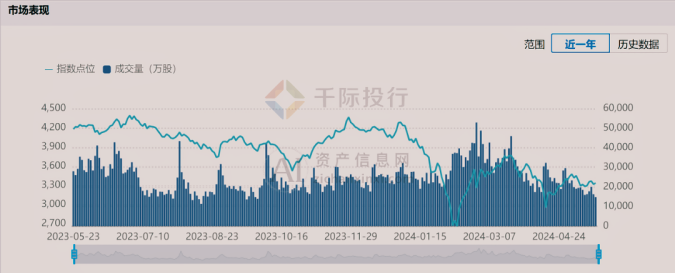
Source: Asset Information Network Qianji Investment Bank iFinD
Figure Instrument Index 881119.TI P/E Ratio

Source: Asset Information Network Qianji Investment Bank iFinD
Figure Instrument Index 881119.TI Price to Book Ratio

Source: Asset Information Network Qianji Investment Bank iFinD
Figure 10 Index Stocks Value Analysis Comparison

Source: Asset Information Network Qianji Investment Bank iFinD
Figure Index Components Tonghuashun ESG TOP10

Source: Asset Information Network Qianji Investment Bank iFinD
The valuation methods for China's instrumentation industry can include price-to-earnings ratio valuation method, PEG valuation method, price-to-book ratio valuation method, price-to-cash flow ratio, P/S price-to-sales ratio valuation method, EV enterprise value method, EV/Sales price-to-sales ratio valuation method, RNAV revalued net asset valuation method, EV/EBITDA valuation method, DDM valuation method, DCF cash flow discount valuation method, dividend discount model, equity free cash flow discount model, unlevered free cash flow discount model, net asset value method, economic value added discount model, adjusted present value method, NAV net asset value valuation method, book value method, liquidation value method, cost replacement method, real options, LTV/CAC (customer lifetime value/customer acquisition cost), P/GMV, P/C (customer), Metcalfe valuation model, PEV, etc.
3.2 Driving factors
(1) New infrastructure promotes new instrumentation technologies
The country is vigorously promoting the construction of new infrastructure. New infrastructure is an infrastructure system that is guided by the new development concept, driven by technological innovation, based on information networks, and oriented to the needs of high-quality development, providing services such as digital transformation, intelligent upgrading, and integrated innovation. Instruments and their core components are important guarantees for communication testing, equipment operation and maintenance, intelligent perception, and big data acquisition. They will promote the instrumentation industry to accelerate the technical development of new products and carry out basic common technology research such as testing requirements, reliability methods, communication transmission, and safety requirements to meet the needs of new infrastructure development.
(2) New demands give rise to new instrumentation industries
The new round of industrial revolution with information technology as the core is the deep integration of high-tech such as information and telecommunications, mobile Internet and manufacturing industry. In recent years, my country has vigorously promoted intelligent manufacturing, smart cities, smart transportation, smart buildings, etc., which will drive the deep integration of instrumentation and information technology. Combined with the national policies and macroeconomic needs such as the "Belt and Road Initiative", supply-side reform, and "Internet +", it will effectively promote the adjustment of industrial structure, transformation and upgrading, make full use of the existing conditions and foundation of the industry, accelerate the industrialization pace and system integration capabilities of intelligent products required for key directions such as intelligent manufacturing, intelligent (digital) factories (workshops), and smart cities (smart water, smart gas, smart transportation, smart medical care, etc.), develop and form new industries, and gradually change the imbalanced development of process industry automation and discrete industry automation, process industry sensors and discrete industry sensors, laboratory instruments and online scientific instruments.
(3) Domestic substitution brings new development of instrumentation
For a long time, the instruments and meters used in key industries such as nuclear power, energy, and petrochemicals in my country have been mainly imported products. Domestic products are difficult to enter because they are mainly low-end products and have poor reliability and stability. Although my country has been promoting localization, the efforts are not strong enough. With the current international political situation, Sino-US trade frictions, and the evolution of the world economic structure, my country has taken the security, autonomy, and controllability of key national industries and national defense construction as an opportunity to promote the independence of core technologies of key products, and strive to basically form the basic guarantee capabilities of automatic control systems and precision test instruments for national large-scale engineering projects and key application fields, as well as the basic support capabilities of automatic control systems and precision test instruments required for major scientific and technological projects. From the perspective of ensuring information security, localization substitution has become a general trend, which will give domestic instruments and meters more market opportunities, so the good products of "specialized, refined, special, and new" enterprises in domestic instruments and meters will be able to seize the opportunity and usher in a new round of development.
3.3 Risk Analysis
China's instrumentation industry has achieved remarkable development in the past few decades. However, while developing rapidly, the industry is also facing various risks. In-depth analysis of these risks is crucial for companies to avoid potential threats and maintain steady development.
First, the risk of intensified market competition is one of the main challenges facing China's instrumentation industry. In recent years, with the massive influx of capital from both inside and outside the industry, market competition has become increasingly fierce. According to the data, as of May 2024, the total number of companies in the industry reached 58, an increase of 13.73% year-on-year. This shows that the industry's market competition is becoming increasingly fierce, and enterprises need to continuously innovate and improve in technology, product quality and services in order to maintain their competitive advantage in the fierce market competition. Especially for small and medium-sized enterprises, when facing large enterprises with strong financial resources and leading technology, their market share and technological strength are relatively weak, and they need to constantly seek differentiated competitive strategies.
Secondly, the risk of technological and product innovation is also a major obstacle to the development of the industry. The instrumentation industry is a high-tech industry, and technological progress and innovation are the key to maintaining the competitiveness of the industry. However, some companies are limited in technology research and development and equipment investment, and are unable to carry out research and development and introduction of new technologies in a timely manner, which may lead to a disadvantage in market competition. The industry's technological development and innovation are rapid, and companies must continue to make technological breakthroughs and maintain technological advantages in order to cope with the ever-changing market demands.
Thirdly, market fluctuations and macroeconomic risks also have a great impact on the development of the industry. The product prices of the instrumentation industry are greatly affected by factors such as the domestic and foreign macroeconomic situation, national policies, and market supply and demand. Market fluctuations may occur, which in turn affects the profitability and profit level of enterprises. Data show that as of May 22, 2024, the total market value of listed companies in the industry reached 192.228 billion yuan, a year-on-year decrease of 21.98%, which shows that market fluctuations have had a great impact on the industry. Enterprises need to pay close attention to macroeconomic trends at home and abroad and adjust their business strategies in a timely manner to cope with market uncertainties.
In addition, the risks of raw material supply and price fluctuations are also issues that the industry must face. The prices of the main raw materials in the instrumentation industry, such as metals and electronic components, fluctuate greatly, and the instability of the supply chain may have an adverse impact on the production and operation of enterprises. Some raw materials rely on imports, and changes in the supply and demand relationship in the international market will also directly affect the production costs and product quality of domestic enterprises. Enterprises need to strengthen supply chain management, improve the stability and flexibility of the supply chain, and reduce the impact of raw material price fluctuations on enterprises.
Finally, enterprises also need to pay attention to policy risks and environmental risks in the process of operation and management. As the country's requirements for environmental protection and energy conservation and emission reduction continue to increase, enterprises need to strictly abide by relevant laws and regulations during the production process to avoid production stagnation and economic losses caused by environmental problems. In addition, changes in national policies will also have a direct impact on the industry. Enterprises need to pay attention to policy trends in a timely manner and make contingency plans to cope with the uncertainties brought about by policy changes.
We believe that while China's instrumentation industry is developing rapidly, it is also facing multiple risks such as intensified market competition, technological innovation, market fluctuations, raw material supply and policy environment. Enterprises need to continuously improve their capabilities in terms of technological innovation, market response, supply chain management and policy adaptation in order to maintain their competitive advantages and achieve sustainable development. Only by fully identifying and effectively managing these risks can the industry maintain steady development in the fierce market competition and meet future challenges and opportunities.
3.4 Competition Analysis
China's instrumentation industry has a long history of development and a complete industrial chain. Through decades of construction and development, it has formed a research and development system with a certain scale and level, and has a high-level scientific and technological team. Major scientific research units in the industry, such as Shanghai Industrial Automation Instrumentation Research Institute and Chongqing Industrial Automation Instrumentation Research Institute, play a leading role in the industry's scientific and technological progress and have developed a large number of new products. In addition, China's automation instrumentation products continue to move closer to international standards, promote the implementation of the ISO 9000 series of international standards, and ensure product quality.

Source: Asset Information Network Qianji Investment Bank iFinD
Although China's instrumentation industry has a profound historical accumulation, it still has certain deficiencies in technological innovation and the research and development of high-end products. Some companies in the industry are limited in their investment in technology and equipment for high-end packaging products and cannot increase capital investment in time to develop new technologies. In addition, the market competition in the industry is fierce, and small and medium-sized enterprises have relatively weak market share and technical strength when facing large enterprises.
With the support of national policies and the growth of market demand, China's instrumentation industry has ushered in new development opportunities. According to the latest data, as of May 2024, the total number of listed companies reached 58, an increase of 13.73% year-on-year. The total market value of enterprises reached 192.228 billion yuan. Although it decreased by 21.98% year-on-year, the total market value of the industry is expected to rebound with the increase in future market demand. The average listing time is 6 years, and the longest is 18 years, which shows that the performance of enterprises in the industry in the capital market is relatively stable. In addition, the industry accounts for 0.23% of the total market value of A shares. With the development of the industry in the future, the market share is expected to increase further.
China's instrumentation industry faces the dual pressures of international competition and technological innovation. With the continuous opening of the global market, the entry of advanced foreign companies has made domestic companies face greater competition in technology, products and markets. In addition, the market demand for high-end technology and products continues to increase. If companies cannot continue to make breakthroughs in technology and maintain their technological advantages, they will face the risk of being eliminated by the market. There are also uncertainties in the industry, such as market price fluctuations and raw material supply, which will have a certain impact on the company's operating performance.
China's instrumentation industry has a profound historical accumulation and a complete industrial chain, and has certain competitiveness in the domestic and international markets. Although more investment is still needed in the technical research and development of high-end products, with the support of national policies and the growth of market demand, companies in the industry are expected to usher in new development opportunities. However, in the face of international competition and market uncertainty, companies in the industry need to strengthen their technological innovation and market response capabilities to maintain their competitive advantages and achieve sustainable development.
3.5 Main participating companies
In China's instrumentation industry, the top five companies by market value (as of May 21, 2024) are Precision Electronics, Sichuan Instrument Co., Ltd., Huaxing Yuanchuang, Keli Sensor and Oriental Zhongke. These companies have performed well in technological innovation, market share and product quality, and have promoted the development of China's instrumentation industry.
Figure 1. Market capitalization ranking of individual stock companies in the instrumentation industry (as of 2024-05-21)
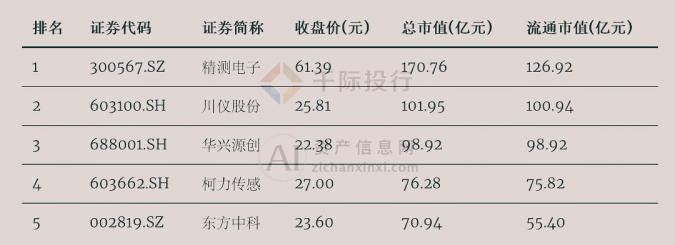
Source: Asset Information Network Qianji Investment Bank iFinD
As a leading manufacturer of precision measuring instruments in China, Jingce Electronics (300567.SZ) is mainly engaged in the research, development, production and sales of testing equipment and automated production lines in the fields of flat panel displays, semiconductors, new energy, etc. Jingce Electronics has strong technical advantages in the research and development and manufacturing of precision measuring instruments. Its products are widely used in well-known domestic and foreign companies, providing customers with high-precision and high-efficiency measurement solutions. The company has always focused on technological innovation and maintained its leading position in the industry by continuously improving its R&D capabilities.
Sichuan Instrument Co., Ltd. (603100.SH) is one of the important participants in China's instrumentation industry, mainly engaged in the research and development, production and sales of industrial automation instruments and control systems. The company's products cover multiple fields such as process control instruments, field instruments, system engineering, etc., and are widely used in petrochemical, electric power, metallurgy, building materials and other industries. Sichuan Instrument Co., Ltd. has a high reputation and influence in both domestic and foreign markets. Its products are known for their high stability and superior performance and are deeply trusted by users. The company focuses on product quality and technological innovation, and continuously promotes technological progress in the industry.
Huaxing Yuanchuang (688001.SH) is a high-tech enterprise focusing on precision electronic testing equipment and industrial automation equipment. Its main products include AOI equipment, ICT equipment, FCT equipment, etc., which are widely used in consumer electronics, automotive electronics and other fields. With its strong R&D capabilities and technological advantages, Huaxing Yuanchuang has become a leading company in the field of domestic electronic testing equipment. The company focuses on R&D investment, continuously launches innovative products with international competitiveness, and promotes the development of China's electronic testing equipment industry.
Keli Sensor (603662.SH) is a high-tech enterprise specializing in sensors and system solutions. Its main products include strain gauge load cells, pressure sensors, torque sensors, etc., which are widely used in industrial automation, Internet of Things, intelligent manufacturing and other fields. Keli Sensor has won a good reputation in the domestic and foreign markets with its high-quality products and services. The company focuses on technological innovation and market expansion, and continuously improves the technical content and market competitiveness of its products.
Oriental Zhongke (002819.SZ) is a comprehensive technology company mainly engaged in the research and development, production and sales of scientific instruments and equipment. The company's products cover multiple fields such as optical instruments, analytical instruments, and environmental monitoring instruments, and are widely used in scientific research, education, environmental monitoring and other industries. With its strong technical R&D capabilities and high-quality products and services, Oriental Zhongke has become an important player in the domestic scientific instrument field. The company focuses on product quality and technological innovation, and continuously promotes industry technological progress and market expansion.
These companies have continuously innovated and developed in their respective fields, making important contributions to the prosperity of China's instrumentation industry. By continuously improving their technology and product quality, these companies have achieved remarkable success in domestic and overseas markets, playing a positive role in promoting the internationalization of China's instrumentation industry.
Chapter 4 Future Outlook
Driven by the national economic and technological development, China's instrumentation industry will have a broader space for development in the future.
First, technological innovation will become an important driving force for the development of the industry. With the continuous development of emerging technologies such as artificial intelligence, the Internet of Things, and 5G communications, the instrumentation industry will usher in technological innovation. Intelligence and digitalization will be the main direction of the development of instrumentation in the future. By introducing advanced sensing technology, data analysis, and cloud computing, instrumentation will achieve higher accuracy, stronger functions, and a wider range of applications. This will bring new growth points to the industry and enhance the overall technical level and international competitiveness.
Secondly, the process of industry standardization and internationalization will be accelerated. As the influence of Chinese enterprises in the global market gradually increases, the formulation and promotion of international standards will become an important task. By participating in the formulation and application of international standards, the international recognition of products will be improved, and more domestic instruments and meters will be promoted to enter the international market. In addition, enterprises also need to strengthen the construction of their own brands, improve product quality and service levels, so as to enhance their competitiveness in the international market.
Thirdly, environmental protection and sustainable development will promote the upgrading of industry technology. As the world pays more attention to environmental protection and sustainable development, the demand for environmental monitoring instruments will continue to grow. Chinese companies need to increase their investment in the research and development of environmental protection technologies and develop more efficient and accurate environmental monitoring equipment. At the same time, concepts such as energy conservation and emission reduction and green manufacturing will also be integrated into the design, production and application of instruments and meters, promoting the industry to develop towards green development.
In addition, the medical and health field will provide important development opportunities for the instrumentation industry. With the aging of the population and the improvement of health awareness, the market demand for medical instruments will continue to expand. Chinese companies need to seize this opportunity to strengthen the technical research and development and innovation of medical instruments and develop high-quality products that meet market demand. Driven by the COVID-19 pandemic, emerging application areas such as telemedicine and smart health monitoring will also become new hotspots for industry development.
Finally, policy support and industrial chain collaboration will provide strong guarantees for the development of the industry. The support of national policies will continue to promote the development of the instrumentation industry, especially in terms of scientific research investment, tax incentives and market supervision, which will provide more development opportunities for enterprises. At the same time, the coordinated development of the industrial chain will further enhance the competitiveness of the industry. By strengthening cooperation with upstream and downstream companies, promoting collaborative innovation and resource sharing in all links of the industrial chain, a more complete and efficient industrial ecology will be formed.
Qianji Investment Bank believes that China's instrumentation industry will face new development opportunities and challenges in the future. Enterprises need to continuously improve their technical level, actively participate in the formulation of international standards, promote product innovation and industrial upgrading, so as to occupy a larger share in the global market. By seizing development opportunities in the fields of scientific and technological innovation, environmental protection needs and medical health, China's instrumentation industry will achieve higher quality development and move towards new glory.